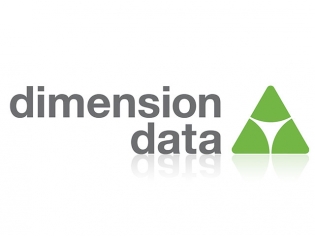As more businesses across different industries become heavily digitally enabled, companies need to develop a digital business strategy that require changing business processes as well as underlying technologies. A digitally-enabled ecosystem-driven business affects not only the network, but all areas of ICT.
Gartner predicts that 50% of businesses will have adopted a digital business approach by 2017, and that by 2020, 83% of businesses will be heavily digitally enabled.
Bruce Taylor, Chief Solutions and Marketing officer at Networking MEA Dimension Data says, “With the digital era the old adage of let’s build it and the business will use it changes. Much of the budget allocated in the digital business will be in the business domain and not in ICT.”
The old mind set of architecting business from an internal view point needs to change to an outside-in approach, built around customer value expectations where digital technologies and business models, as well as integrated partnerships deliver end-to-end solutions for the business to the end-consumer.
He continues that ICT will need to work as an “enablement broker” with businesses to enable the business function. Examples of these are adoption of cloud services to enable brokerage across company-partner ecosystems, and mobility to enable the workforce and consumers to connect across eco-systems.
Failure for ICT to act as enablement brokers will result in business bypassing ICT and brokering services on their own. This will expose the business to unnecessary risks and threats if it is not integrated and implemented correctly.
Therefore, utilising new methods of consumption of services and technology, and new approaches to enabling ICT functions becomes key for ICT strategists in the digital business. “Developing a digital business strategy requires an increasing understanding of how digital technologies, business resources and information are interlinked, and how new business models can be developed for business growth, and for meeting the changing expectations of the digital world.”
Taylor says that in short, the model becomes a pay-as-you-consume brokerage service model that enables the enterprise and cross enterprise ecosystem to deliver digital strategic intents. “Fundamentally this means ICT must evolve to stay ahead and enable digital business.”
Does your network enable your digital strategy?
“In the last few years the network has become a core factor in all our communication and flow of information into and out of the business. It is a key enabler in the way we transact and in how we operate our businesses. The network is now also a crucial foundation in enabling a digital business, says Taylor.”
Yet, many companies view the network as a cost to the business, and have a tendency to sweat their network assets. While this may bring relief to companies in reduced capital outlay over years, this approach carries an increasing risk in the ability of the company to evolve towards a digital business model. Companies should ensure that what they refresh or replace is designed with the purpose in mind to future proof their network to enable the business digitally.
Taylor continues, “The next-generation network for digital business requires some thought into how you enable the internal and external brokerage ecosystem of the business. To enable a digital ecosystem approach, all elements of ICT are affected, and not just the network.”
He comments that the network needs to have the ability to enable digital transactions in a secure and efficient manner, without creating delay and time-to-market risk for the business. Companies need to investigate how Software-defined networking (SDN) plays a key part in the digital ecosystem of a business.
Moreover, to enable efficient transactions within and outside the enterprise specifically between ecosystem partners and consumers, a transient strategy for ICT around application performance management, network performance management and business transaction management needs to be investigated.
The datacentre network needs to cater for bigger volumes of information that flow through the network on its route to internal users and external parties. The volumes of data in the datacentre will rise exponentially as more partnering ecosystems are brought to bear in the enterprises. As a result, companies need to rethink how to design and provision the datacentre. What will the impact be on Wide Area Networks (WAN) inside the business and outside the partner ecosystem?
Taylor continues that as datasets expand along with the evolving ecosystem, the WANs ability to deliver the content efficiently to the end users of the information will be put under strain. Companies therefore need to provision a strategy for the WAN for business transactions, which is not just about bandwidth, but about how to use the bandwidth efficiently, route the business transaction through priority routing, and optimisation of bandwidth, amongst others.
To enable a digital ecosystem, it’s also important to develop a mobility strategy to get business in front of clients. The strategy needs to investigate network elements such as a wireless environment inside the business, as well as catering for consumers that use wireless in the company’s channel. Crucial to this is to investigate how companies backhaul this extra and often larger content back into and across the partner ecosystem network.
Taylor concludes, “As the digital business ecosystem evolves and grows, the complexity that is driven to automate and orchestrate the network becomes a challenge to support. To support and manage the associated services for the business, companies need to consider contracting the services of an ICT partner to run the digital ecosystem via a managed service.”





